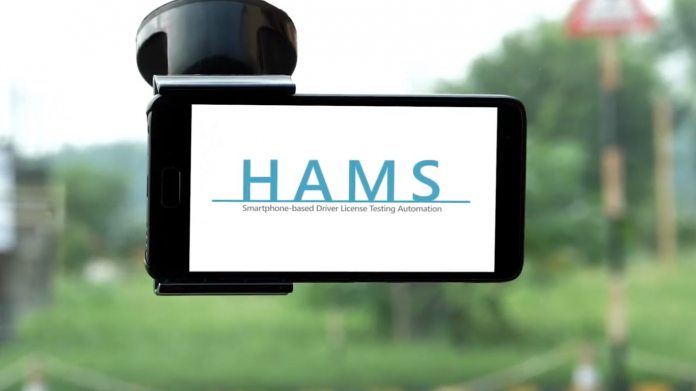Project HAMS (Harnessing Automobile for Safety) automates licensing by removing a trainer from the vehicle. Instead, a smartphone is docked to the windshield of a car. Microsoft says HAMS will allow Indian authorities to better police licensing discrepancies. India has a problem with driving tests. Numerous loopholes exist that allow motorists to get licensed without taking an assessment. A survey by SaveLIFE Foundation found 59% of participants didn’t complete a test to get their license. Venkat Padmanabhan, Deputy Managing Director, Microsoft Research India points out a normal test scenario is problematic: “The main challenge in the traditional driver’s license test is the burden placed on the human evaluators and the resulting subjectivity that a candidate faces. Automation using HAMS technology can not only help relieve evaluators of the burden but also make the process objective and transparent for candidates.”
Microsoft wants Project HAMS to be used to make the test process more efficient and cost-effective. The company collaborated with the Institute of Driving and Traffic Research (IDTR). This in itself is a partnership between the Department of Transport of State Governments and Maruti Suzuki India Limited.
Data Monitoring
When a smartphone is docked in the car, it collects data from sensors around the vehicle. For example, front and rear cameras monitor the driver and the road. Other data factors considered include tracking the car’s road position and its trajectory to assess driving moves such as parallel parking. “The successful deployment of the HAMS-based driver license testing at the Dehradun RTO is a significant step towards the Transport Department’s goal of providing efficient, world-leading services to the citizens of Uttarakhand. We are proud to be among the pioneers of the application of AI to enhance road safety.” – Shri Shailesh Bagauli, IAS, Secretary, Government of Uttarakhand




